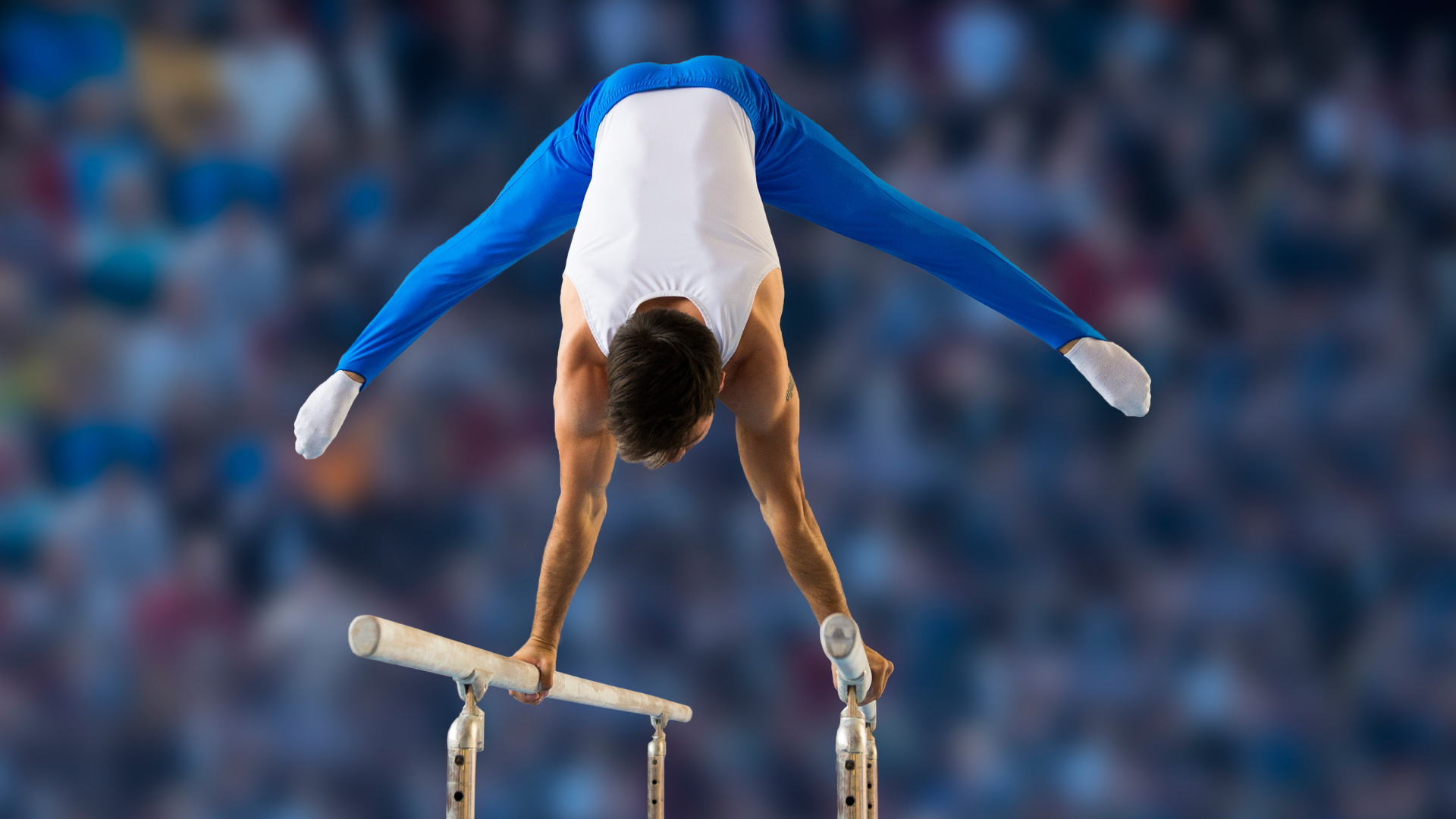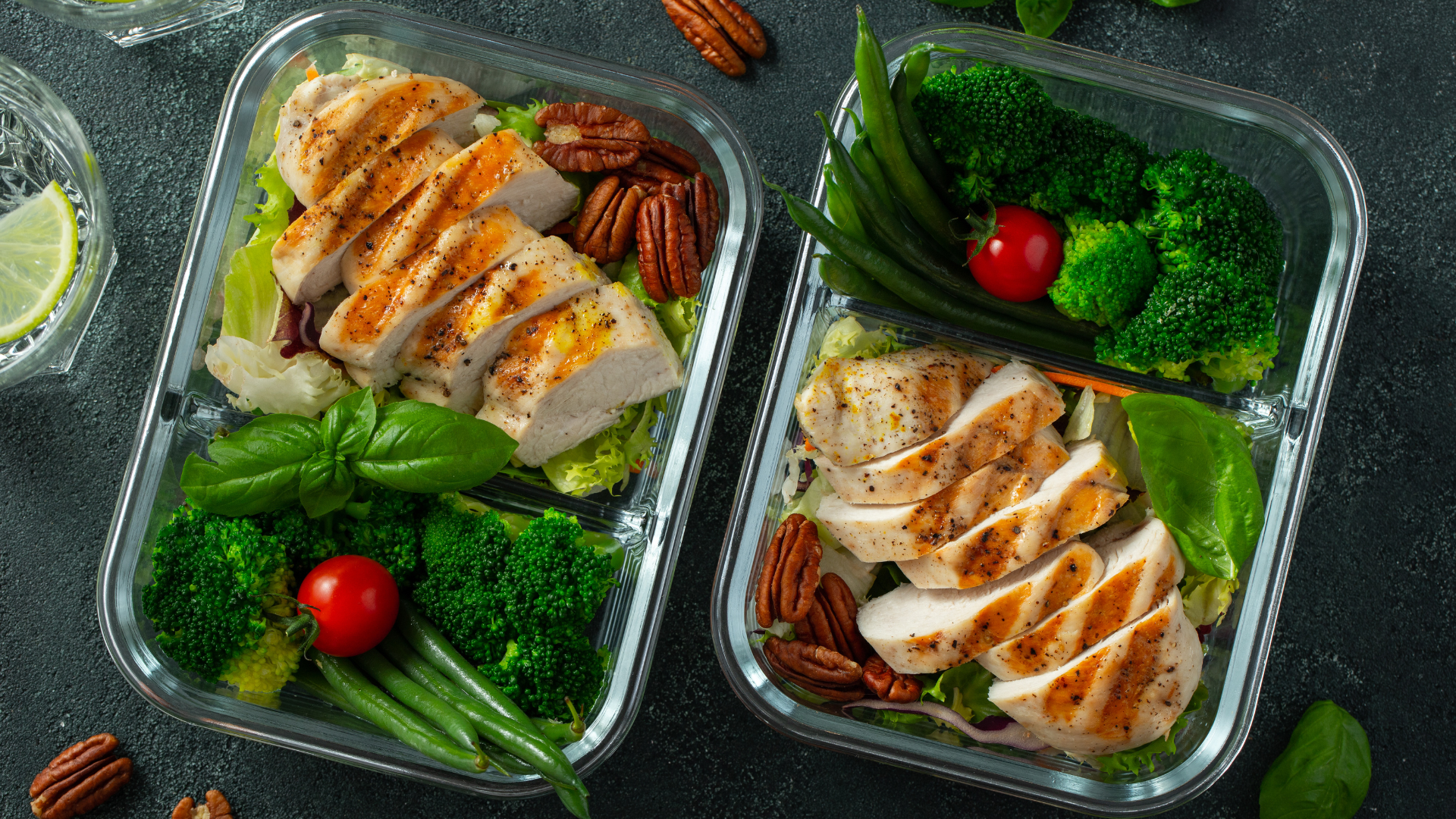Building strength through bodyweight exercises is one of the most effective and accessible ways to improve overall fitness. Calisthenics provides a solid foundation for developing muscle, mobility, and endurance without the need for expensive gym equipment. In this guide, we’ll cover six essential bodyweight exercises that help build strength, along with progressions to help you level up over time.
1. Push-Ups
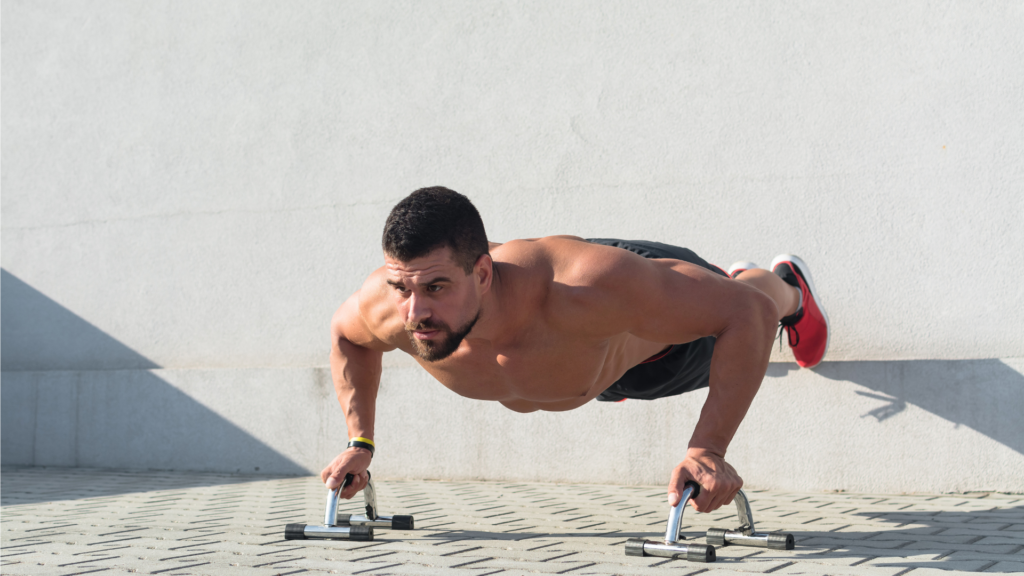
Push-ups are a fundamental upper-body exercise that strengthens the chest, shoulders, triceps, and core. They are one of the best pushing movements for beginners and advanced athletes alike because they can be scaled to any level. The ability to modify push-ups by adjusting incline, hand placement, and tempo allows for steady strength progression. Training different variations also improves shoulder stability and control, making it an essential exercise in calisthenics.
Progressions:
- Wall Push-Ups – A great starting point for beginners to develop pushing strength.
- Incline Push-Ups – Lower the incline as you gain strength.
- Kneeling Push-Ups – Reduces body weight resistance while building strength.
- Standard Push-Ups – The classic full-body push-up that should be mastered.
- Deficit Push-Ups – Increases the range of motion for deeper chest activation.
- Pseudo Planche Push-Ups – Develops scapular and shoulder strength for advanced movements.
2. Dips
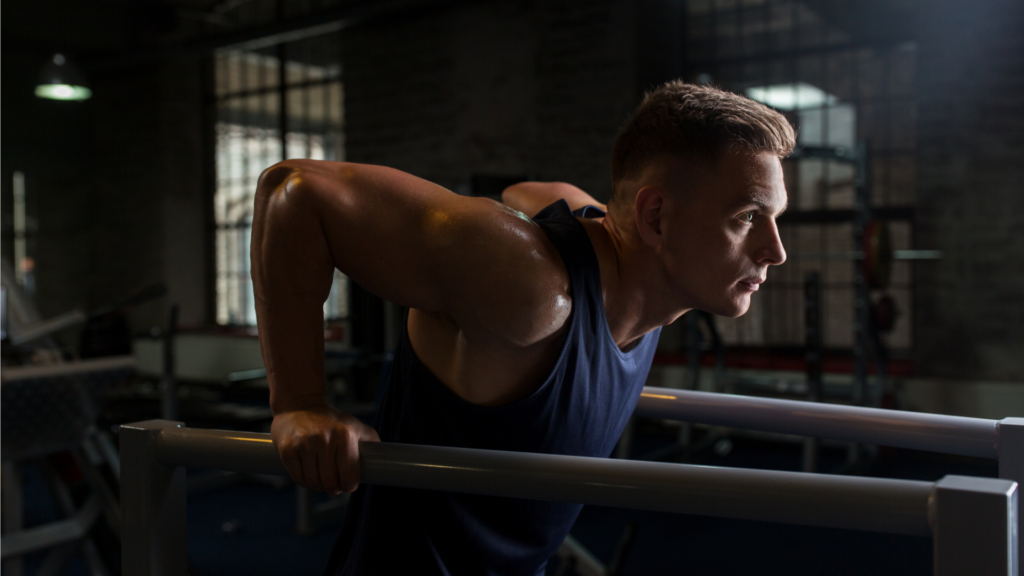
Dips are one of the best exercises for developing pushing strength, targeting the chest, shoulders, and triceps. They help improve pressing power and triceps endurance, which translates to more advanced movements like planche and muscle-ups. Dips also increase flexibility at the end range of motion, preventing shoulder injuries.
Progressions:
- Assisted Dips – Use your feet or resistance bands for support.
- Negative Dips – Focus on slow, controlled descents to build strength.
- Band-Assisted Dips – Reduces difficulty while maintaining full range of motion.
- Full Dips – The standard dip, essential for upper-body strength.
- Deep Dips – Increases the range of motion, improving flexibility and strength.
3. Pull-Ups
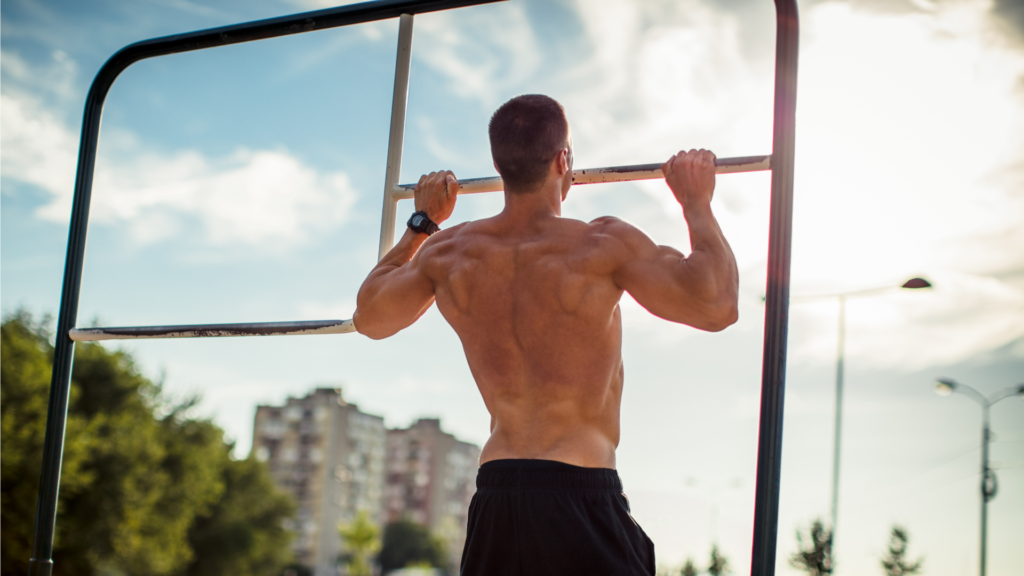
Pull-ups are a foundational pulling exercise that builds upper-body strength, particularly in the lats, biceps, and forearms. They help develop grip strength, scapular control, and back endurance, which are essential for pulling movements in calisthenics. Unlike machines, pull-ups require full-body engagement, making them superior for functional strength.
Progressions:
- Assisted Pull-Ups – Use a resistance band or foot support to decrease difficulty.
- Negative Pull-Ups – Focus on lowering slowly to build control.
- Chin-Ups – More biceps involvement for an easier pulling motion.
- Full Pull-Ups – Mastering strict form ensures maximum strength benefits.
- Archer Pull-Ups – Develops unilateral strength and prepares for one-arm pull-ups.
4. Rows (Inverted Rows)
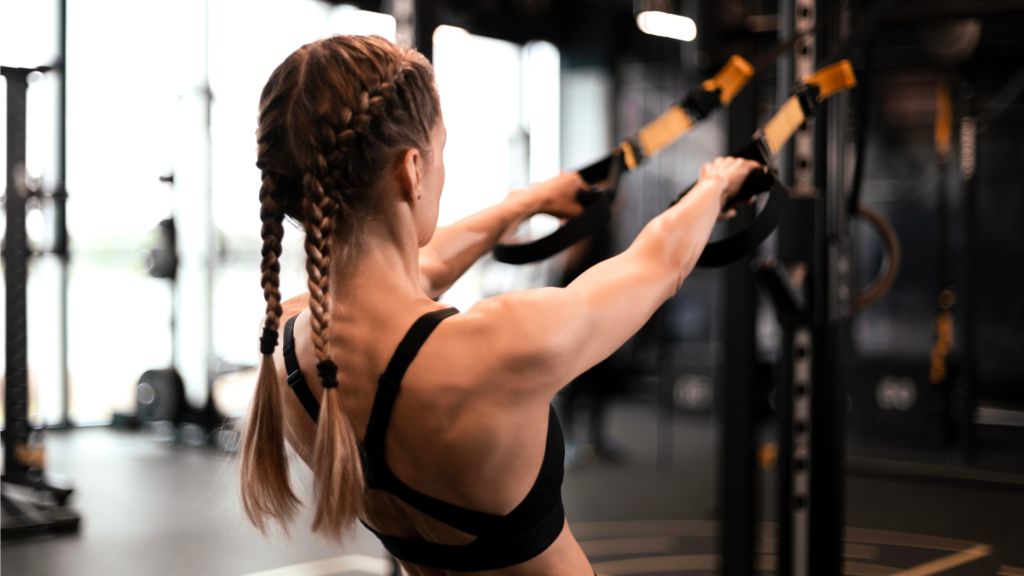
Rows are a crucial horizontal pulling exercise that complements pull-ups by strengthening the back, shoulders, and biceps. They improve posture, prevent imbalances, and help build pulling endurance. Performing rows helps with scapular control and strengthens the antagonist muscles needed for pushing exercises like push-ups and dips.
Progressions:
- Doorway Rows – A simple beginner-friendly option.
- Incline Rows – Use a bar or rings at a higher angle to reduce difficulty.
- Full Inverted Rows – Requires core engagement for proper form.
- Single-Arm Rows – Develops unilateral control and grip endurance.
5. Handstands

Handstands develop overhead pressing strength, core stability, and body awareness. Learning how to balance and hold a handstand teaches shoulder endurance, wrist strength, and body control, all of which are crucial for mastering calisthenics movements. Handstands also improve shoulder mobility and help prevent injuries in pressing exercises.
Progressions:
- Pike Handstand – Helps beginners build confidence upside down.
- Wall Walks – Walk your feet up a wall to improve endurance and control.
- Chest-to-Wall Handstands – Teaches proper positioning and alignment.
- Freestanding Handstand – Requires full control and balance for mastery.
6. Core Strength (Abs & Lower Back)
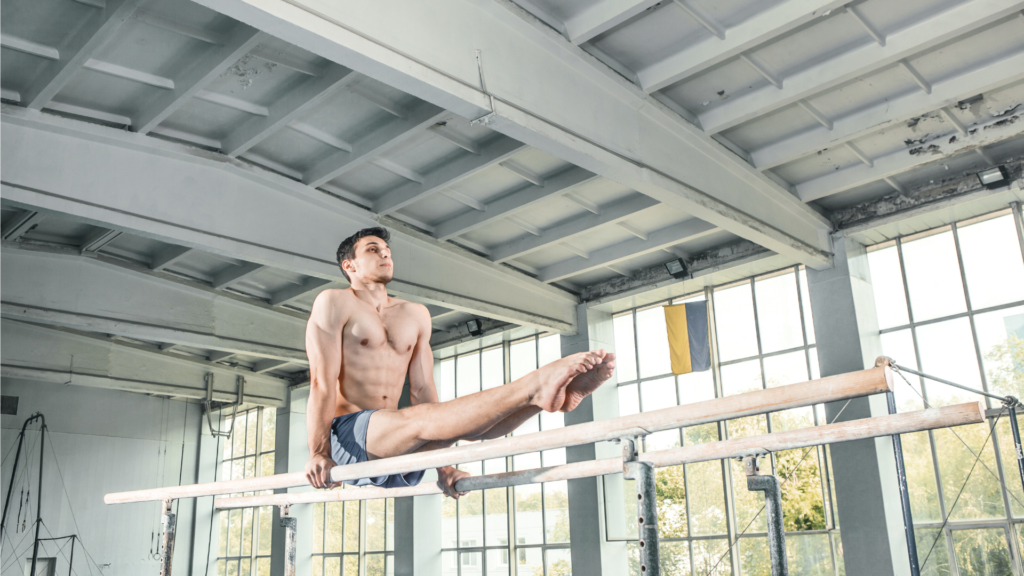
A strong core enhances overall athleticism and improves performance in all calisthenics movements. Strengthening the core is essential for maintaining stability in pushing and pulling exercises, preventing lower back injuries, and increasing power transfer. Unlike traditional ab exercises, these movements train the core dynamically, preparing the body for functional strength challenges.
Variations:
- Knee Raises – Strengthens lower abs and hip flexors.
- Hanging Leg Raises – Builds endurance and core control.
- Ab Rollouts – Engages deep core muscles for stability.
- Reverse Hypers – Strengthens the lower back to prevent injuries.
- Hollow Body Hold – Develops body control for dynamic movements.
Conclusion
Mastering these six bodyweight exercises will help you develop impressive strength and pave the way for more advanced calisthenics skills. By following the suggested progressions, you can gradually increase difficulty and continue challenging yourself.
Ready to take your training to the next level? Check out our calisthenics classes to build strength efficiently!


